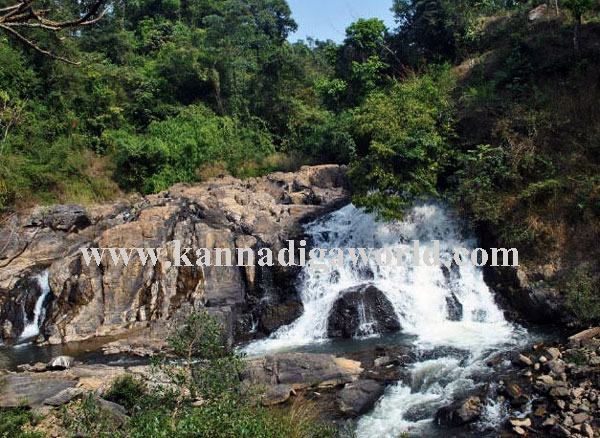Mangaluru, September 21: The central Environmental Ministry on September 14th has announced the fresh notification in connection to the implementation of Kasturirangan report which has taken away the sleep of people residing close to the forest areas in six states of the country.
Similar to the past, over 1,500 villages of ten districts in the state comes under this. The Malnad people’s struggles for justice have not received any results. Fierce opposition and massive protest was witnessed across Malnad when the first notification of Central government was announced on Kasturirangan Report in 2013.
When opposition was witnessed against this notification pertained to the six states of the country; the central government had decided to collect people’s opinion as well as from the concerned states on the sensitive areas. Accordingly, reports were also collected from the states.
Now, after reviewing all the reports the fresh notification issued from central government has no significant change compared to the previous one. In the fresh notification, it is clearly mentioned that apart from Kerala, the border will remain the same in other states as marked by the Kasturirangan Committee.
As per the fresh reports, 20,668 square kms of Karnataka, 17, 340 square kms of Maharashtra, 9,993 square kms of Kearla, 6,914 square kms of Tamilnadu, 449 square kms of Gujrat and 1,461 square kms of Goa are marked as environmentally sensitive zones. In the previous notification, 13,108 square kms area in Kerala was marked as sensitive.
This time about 3 thousand square kms area is left out. The Kerala state has completely excluded the residential areas and marked other areas as sensitive zones, which has been accepted. In the wake of people’s protests in Karnataka, the government conducted meeting at village levels and collected people’s opinion.
State government had said that a memorandum was submitted to the Central Government to declare the areas excluding the residential villages as sensitive zones. But the central government has not consented to this. It appears as though the reports sent from Karnataka including other states have landed in litter bin. In the fresh reports now, it is explained that; ‘in the wake of protests from various states, meeting with Minsters of Forests from various states was convened. Discussions were held with all the MP’s from the related areas’.
In that meet MP’s and Ministers from Kerala, spoke in favour of their state and succeeded in it. But it is evident from this that the MP’s and Ministers of Karnataka could not achieve it.
Kasturirangan report:
The Western Ghats range is the resource of numerous sensitive flora and fauna in the world. In order to protect this, the central government had formed a delegation led by Madhava Gadgeel. The Gadgeel delegation had submitted a report on this. When the government went forward to implement this report, severe protests were witnessed from the concerned state. Hence the Central Government to review this had formed a delegation led by Kasturirangan. This committee reviewed previous reports as well as the ground reality of the Western Ghats and had submitted another report. This is Kasturirangan report.
After the reinvestigation, now fresh notification is out. Similar to all the projects of Forest and Environment Protection, in this too the prime victims are the tribal people of the country.
In the sensitive zones, various restrictions are imposed. Mainly there are five restrictions of which it is believed that complete restriction on mining, restriction of power generation stations, restrictions on red listed industries, high rise buildings of over 20,000 square feet are banned which do not have a major impact on the life of common man. But various restrictions are imposed on agriculture, animal husbandry including the industrialization, and the basic developments including the roads may be hampered.
Major areas of Chikamagaluru, Uttarakannada, Kodagu and Shimogga district will be environmentally sensitive zones.
The areas in Karnataka falling under the report:
Under the Kasturi Rangan reports, in the state; area of 20,668 square kms from 1,576 villages will be covered from 38 taluks under ten districts. 62 villages of Khanapur taluk in Belgaum district; Chamarajnagar district -21 villages in Gundlupete; Chikmagalur District -27 villages of Chikmagalur taluk, 32 villages of Koppa; 27 villages of Mudigere; 35 villages of Narasimharajapura; 26 villages of Sringeri; Kodagu district- 23 in Madikeri taluk, 11 in Somawarpet, 21 villages in Virajpet. Hassan district- 1 village of Alur taluk, 34 villages of Sakleshpur; Uttarakannada district – 43 in Ankola taluk, 28- Bhatkal, 44 in Honnavar, 110 in Joida, 39 in Karwar, 43 in Kumata, 107 in Siddapura, 125 in Sirsi, 87 villages in Yellapura. Dakshina Kannada district- 17 in Beltangady, 18 in Sullia, 11 villages in Puttur. Shimoga district – 126 villages in Hosanagar taluk, 134 in Sagar, 12 in Shikaripura, 66 in Shimoga, 146 villages in Thirthahalli. Mysore district – 62 villages in Heggadadevanakote, Udupi district – 13 in Karkala Taluk, 24 in Kundapur taluk, are the villages that falls under the jurisdiction of the environmentally sensitive area.
It is inevitable that the farmers staying in these villages have to lead lives as instructed by the government.
In connection to the Kasturirangan report, the Environment ministry has published a fresh notice on September 14th. The environment Ministry has also given a chance that in case of any objections on the notice it may be submitted within 60 days. At least now, the state government has to initiate actions in this regard.



